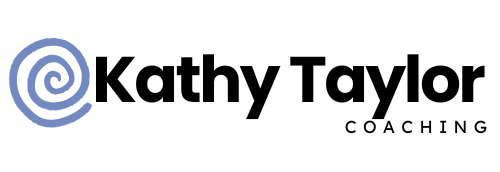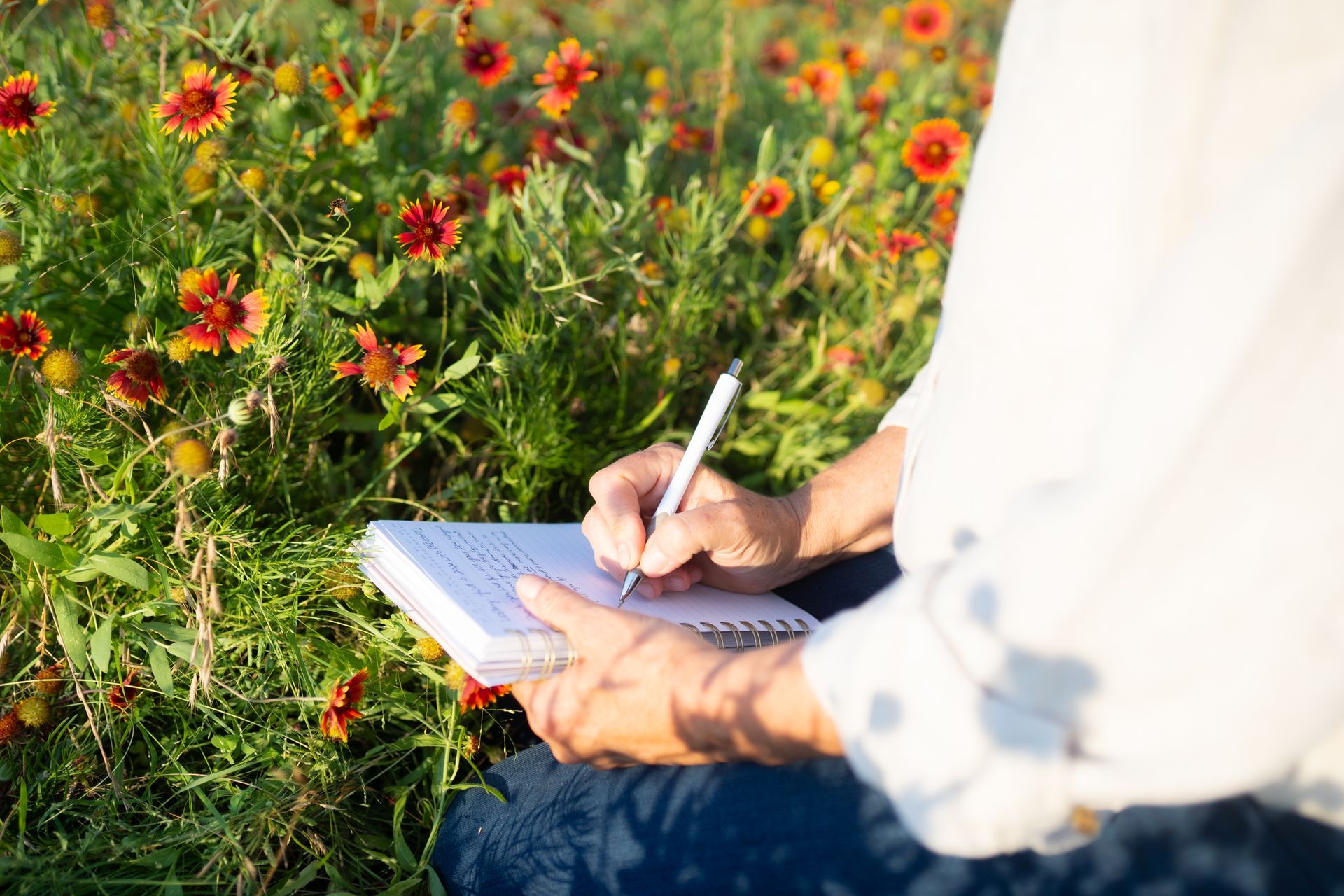
If you're someone who starts things with passion but gets stuck in the swirl of overthinking — this piece is for you. We'll explore why your mind may be overworking to protect you from feelings you haven't fully met, and how reconnecting with your body can open up space for presence, clarity, and self-trust.
Table of Contents
- The Gift (and Weight) of a Thinking Mind
- When Insight Interrupts the Pattern
- Living From the Neck Up
- Returning to the Body
- Feeling More Reveals More
- Grief, Sadness, and the Gift of Softening
- Why This Matters — Especially for Deep Thinkers
- Gentle Practices to Begin
- A Final Reflection
"Geez, Kathy. You think too much."
It was always said casually or jokingly, but it still cut. The message was subtle but sharp: something about me was wrong. I should be more carefree, more spontaneous. A little lighter. Maybe you’ve heard something similar?
For a long time, I agreed with and believed them.
The Gift (and Weight) of a Thinking Mind
I found some relief when I took the StrengthsFinder assessment and saw “Intellection” in my top five strengths. (This wasn't about being smart, but enjoying thinking. ) Finally, a glimmer of affirmation! My constant questioning, analyzing, and deep reflection wasn’t a flaw. It was a strength!
As I learned more about Strengths, I understood that when overused, they can become like armor. Something to hide behind, rely on too much and, in the end, cause problems in our relationships and work.
For me, thinking was a kind of fortress. A safe place in a world that felt unpredictable and emotionally intense. I told myself I was thinking things through to make good choices — and sometimes I was. But a lot of the time, I was just trying not to mess up. Trying not to get it wrong. Trying not to let anyone down — including myself.
It looked like productivity on the outside. But on the inside, the diagnosis was Analysis Paralysis.
I have started and not finished SO many posts. Things usually start out smooth and clear with an enlivening spark or idea. The words come easily, and I feel connected to what I'm saying.
But then — the overthinking creeps in. I freeze. I start questioning everything.
- Is this too much? Too unclear?
- Will people misunderstand me?
- Will they think I'm being dramatic, or too vague, or not credible enough?
The editing spirals begin. I reread and tweak because I want it to be good, but there's a tiny voice afraid of not measuring up.
When Insight Interrupts the Pattern
The first time I heard the phrase, “Overthinking is underfeeling,” my eyes widened and my ears perked up. I knew there was something to this.
That simple phrase cut through all the noise. I had always prided myself on emotional awareness. I could talk for hours about feelings — mine, yours, anyone’s.
But feeling them? That was another story.
Somewhere along the way, thinking became my safe house. And emotions — real, raw, messy emotions — stayed neatly tied up with a bow.
Living From the Neck Up
When we live primarily in our heads, emotions become concepts. We learn to talk about anger without ever feeling it. We reflect on heartbreak without allowing our hearts to ache.
Our bodies, meanwhile, whisper messages that go ignored. Fatigue. Tight shoulders. A racing heart. A quiet sense that something’s off. But the mind barrels ahead, gathering data, building narratives, trying to “figure it out.”
The longer we stay in that cycle, the more our intuition fades into the background. Decisions take longer. Relationships feel more performative than present. Stress compounds because we’ve stopped listening to the one thing that never lies: our body.
Returning to the Body
I didn’t set out to become “more embodied.” That language would have sounded vague or even indulgent to my earlier self. Even now, I know it's nebulous to people.
But over time--and with practice-- I began to notice what happened when I stopped trying to understand my feelings and started to actually feel them.
At first, it was strange and uncomfortable, but the notion of a "felt sense" slowly shifted from abstract to something I could actually experience. I didn’t think it — I felt it. A nudge in my shoulders. A breath I didn’t realize I’d been holding. A tiny, almost imperceptible exhale that signaled some part of me had softened. I began noticing just how often my shoulders were tense, nearly touching my ears. And when I dropped them, my whole posture changed. My body leaned back a little. A breath came — not forced, just... there.
Something quiet inside unclenched.
Feeling More Reveals More
As I began to feel more consistently, I noticed new layers popping up. It was easy for me to get frustrated and fume about little things like a slow-loading website or trying to type and htting the wrong letter over and over again. But when it came to relationships, the emotional stakes felt higher. It was harder for me to express anger in those moments because real rupture is possible. Feeling more has surfaced questions for me:
- Where am I letting things slide to avoid conflict?
- Where are my boundaries unclear or leaky?
- And is that really good for the relationship--or me?
Grief, Sadness, and the Gift of Softening
Grief and sadness have also become easier to access--and process. I don't feel the same level of shame at being tenderhearted or fear looking "weak." I'm no longer embarrassed or feel like my emotions are a burden.
Feeling my own messiness helps me hold others with more grace. Judgment often turns to curiosity.
One of the biggest benefits is that for the first time ever, I feel fully
here. I always
thought I was present. (That's kind of the problem, isn't it-- thinking it?) But now I know what it
feels like, and life is a very different experience.
I could always analyze emotion, but I couldn’t inhabit it. These days, I know, in flickers and glimpses, what it means to do both.
Remember, this isn’t a linear process. I’m still practicing. Some days are easier than others. Some seasons and environments invite it more naturally. Others challenge it. But the difference now is that I know what it feels like to live in my body, not just in my head, and I keep returning when I drift.
Why This Matters — Especially for Deep Thinkers
If you’re someone who thinks deeply, reflects often, and holds high standards — this isn’t a call to abandon that part of you. Thinking is not the enemy. It’s one of your greatest gifts.
But it’s not the only gift.
When thinking is the only tool in our kit, it can become avoidance. It helps us stay two steps ahead of pain — but also two steps removed from joy, connection, and presence.
Returning to your body isn’t about trading one strength for another. It’s about integration. Letting your mind and your emotions walk side by side. Letting your insights land in your cells, not just your sentences.
Gentle Practices to Begin
This is not a checklist or a prescription. Just a few starting points that helped me reconnect:
- Body scans in the morning: not to fix anything, just to notice. Where is there tightness? Warmth? Numbness?
- Naming feelings out loud, with no analysis. “This is sadness.” “This is frustration.” “This is delight.”
- Letting tears come without asking why. Sometimes the release is the answer.
- Taking a walk and NOT listening to a podcast while you do. Let silence be a companion instead of a problem to solve.
These small acts of presence, repeated over time, opened the door to something larger: a sense of belonging within myself.
A Final Reflection
If you recognize yourself in these words — if you’ve ever been told you’re “too much” of a thinker, or if your emotions feel distant even as you talk about them fluently , know this:
You don’t have to choose between thinking and feeling. You were never meant to.
There’s wisdom in your thoughts, and there’s truth in your body. They’re not in competition — they’re partners.
And when they work together, something beautiful happens. Life becomes less about figuring it all out and more about fully and wholeheartedly living it.






